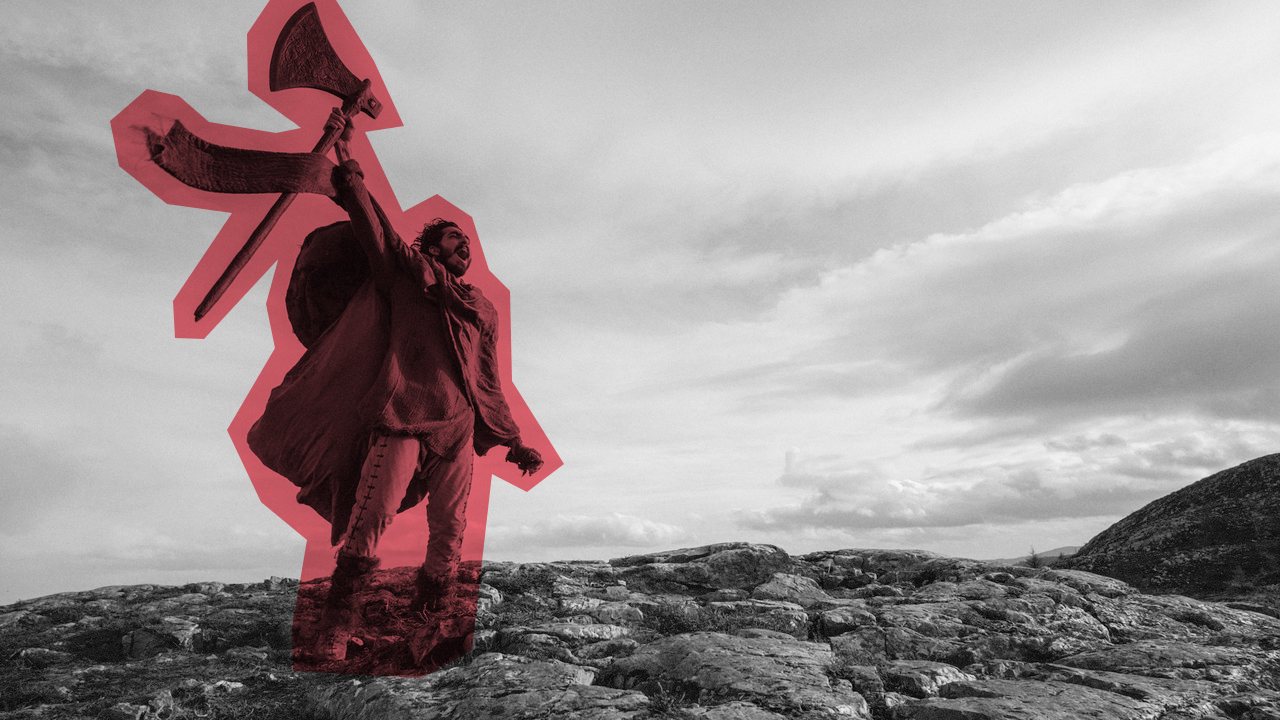THERE WILL BE SPOILERS
Let’s take a closer look at David Lowery’s The Green Knight (2021) today. A “spiritual sequel” to the movie has already been announced, going by the title of The Oak Thorn & The Old Rose of Love (TBD), and probably based on the book The Rose and the Thorn, by Michael J. Sullivan.
The movie stars Dev Patel as Gawain, a wannabe-knight niece to King Arthur, who is already in his 40s-50s in the film.
The Green Knight adapts the late XIV-century poem Sir Gawan and the Green Knight, available in modern English translation courtesy of the University of Toronto. It is not an entirely faithful adaptation, though, but here’s the first thing you need to know going into this movie:
Arthurian mythology has a pretty long history, it’s not set in stone, and it evolved gradually to reflect the morals of the times.

This is specially relevant when examining the situation of Gawain’s mother, Morgan le Fay.
Morgan is one of Arthur’s older half-sisters, the others being Morgause and Elaine. In fact, Morgause and Morgan are often merged into one single figure in some accounts of the myth.
In earlier versions of Arthurian mythology, Morgan le Fay is portrayed as a benevolent figure who helps Arthur out on occasion. “Fay” is an earlier French word that translates as “fairy”, and she is supposed to have some sort of “magical” powers or knowledge.
However, as paganism was displaced and being a Christian became the norm, Morgan’s magic and powers came to be seen as devilish, and so Morgan was slowly transformed from an ally into a foe.
Her character in later accounts of the myth can be interpreted as a symbol of womanhood and paganism, both things apparently regarded as inherently evil by the XIV century.
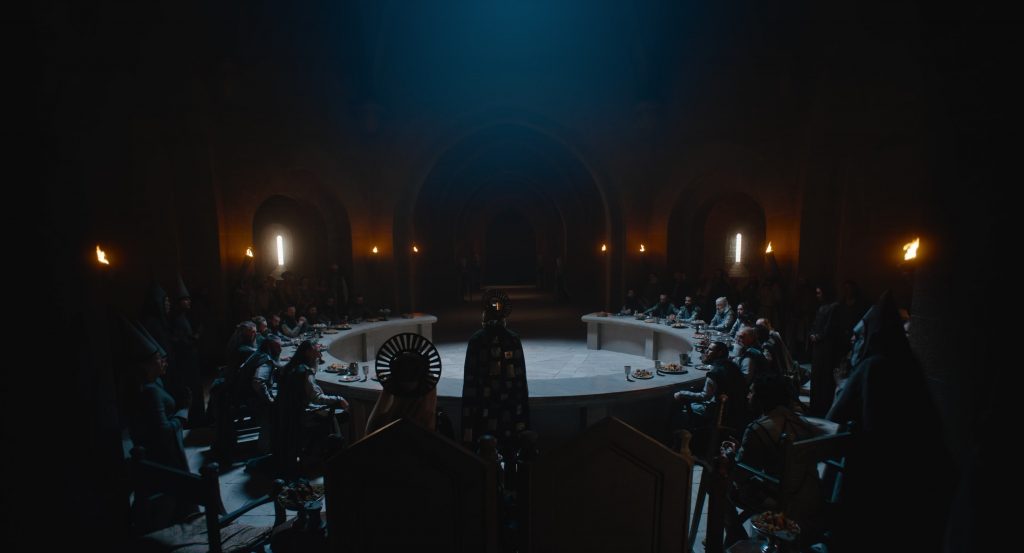
Lowery chooses to set the story at a turning point when Morgan seems to be considered part of the family, but it is obvious that she does not quite belong with them either.
If you are thinking that does not seem to be a fair deal, you don’t know the half of it yet. As we said before, Morgan was Arthur’s half sister – let’s take a closer look at the family tree.
So we have Arthur’s mother, Igraine, married to a Duke, Gorlois, and having three, two or one daughters by him (Morgan, Morgause, and Elaine, depending on the version).
King Uther sees Igraine and decides that he wants her, although there’s the unfortunate issue of her already being married. Not a problem – King Uther kills the husband, disguises himself pretending to be him, and rapes Igraine, who bears him a son, the future King Arthur.
You would think that, by all accounts, the bad guy here is the rapist King, and by XIV-century standards… you’d be wrong. At the time, Morgan was considered the villain by resenting the King who raped his mother.
So, it is no wonder that Morgan does not feel at ease with the rest of the family.
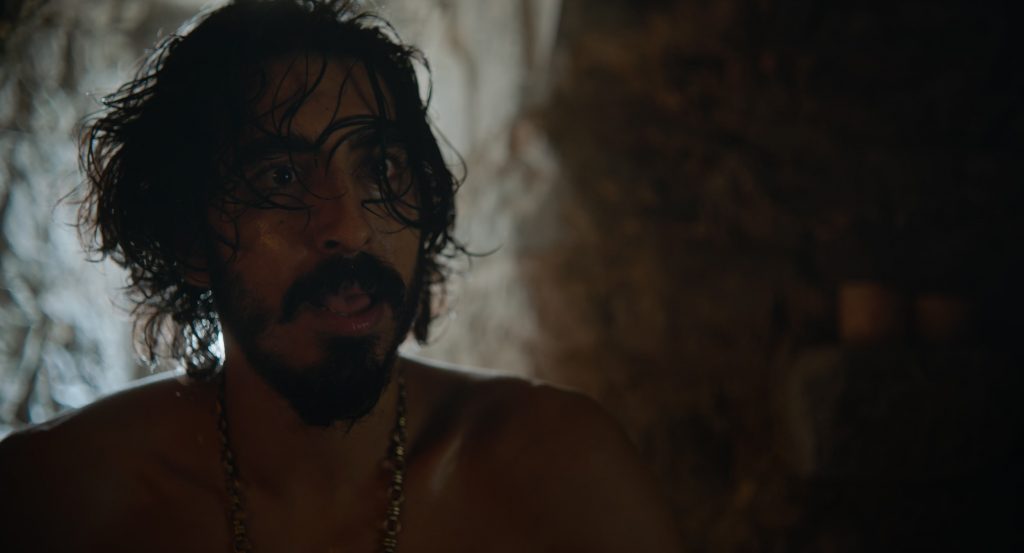
At the beginning of The Green Knight, we are introduced to Gawain and his lover, Essel, after a hard knight of drinking, whoring, and partying.
Gawain’s mother, Morgan, is not pleased by her son’s ways, and decides to put him through an ordeal in order to get him to mature a little bit. And so, she summons the Green Knight.
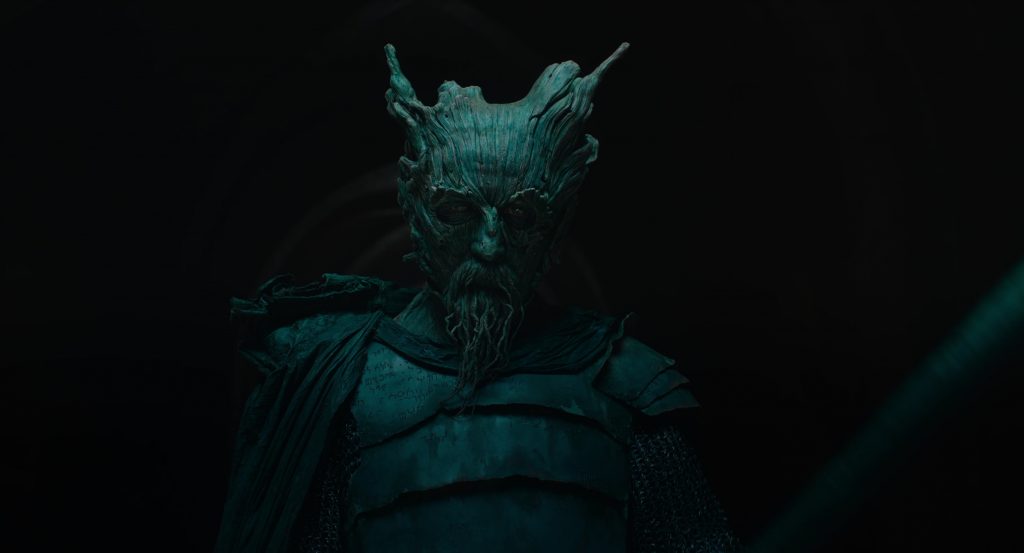
In the poem, she summons the knight because she wants to scare Queen Guinevere to death and test Arthur’s knights, although her motivations there don’t really add up.
But now, let’s talk about the Green Knight.
The Green Knight is really a rehased version of the Green Man, a pagan symbol for nature and the cycle of life, death, and rebirth.
By the Middle Ages the colour green had also adquired several not-so-positive meanings, mainly:
- The base desires of men
- Witchcraft
- Devilry and evil
However, as paganism integrated within christianity, the Green Man came to be associated with the resurrection of Christ, and it can actually be found in medieval churches of the time.
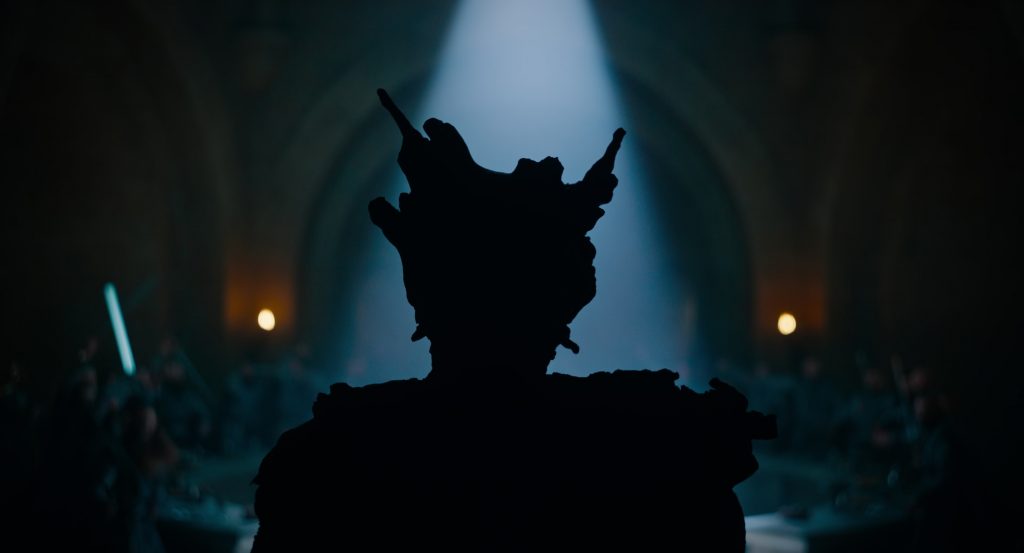
But let’s go back to Morgan. After she summons the Green Knight, he crashes the Christmas party at the castle, and proposes a round of the “beheading game”.
This game is documented in myths dating back as far as the VII-century, and you play it by dealing your opponent a blow that he can return in kind.
In the movie, it is Gawain who accepts the challenge, but he goes about it in the least honorauble way he can think of – he cuts the Green Knight’s head.
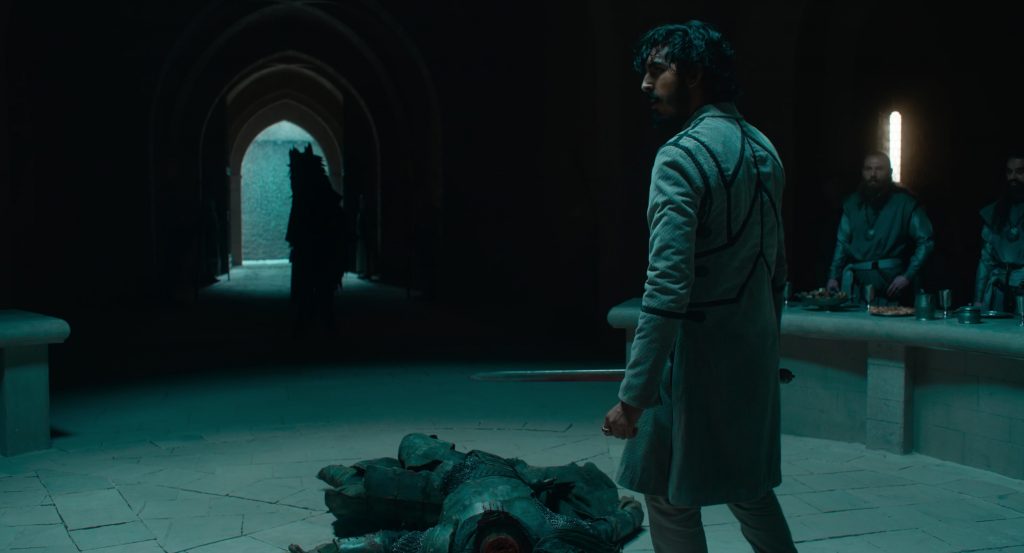
This is another early indicator by Lowery that Morgan is right to be concerned about her son. Gawain could had been honourable and dealt the knight a blow that he was supposed to be able to return, but instead, he chose the most advantageous path.
By cutting the knight’s head, Gawain believes that he is spared any blows himself. Unfortunately for him, the Green Knight is a supernatural being, and has no qualms getting back up and retaking its head.
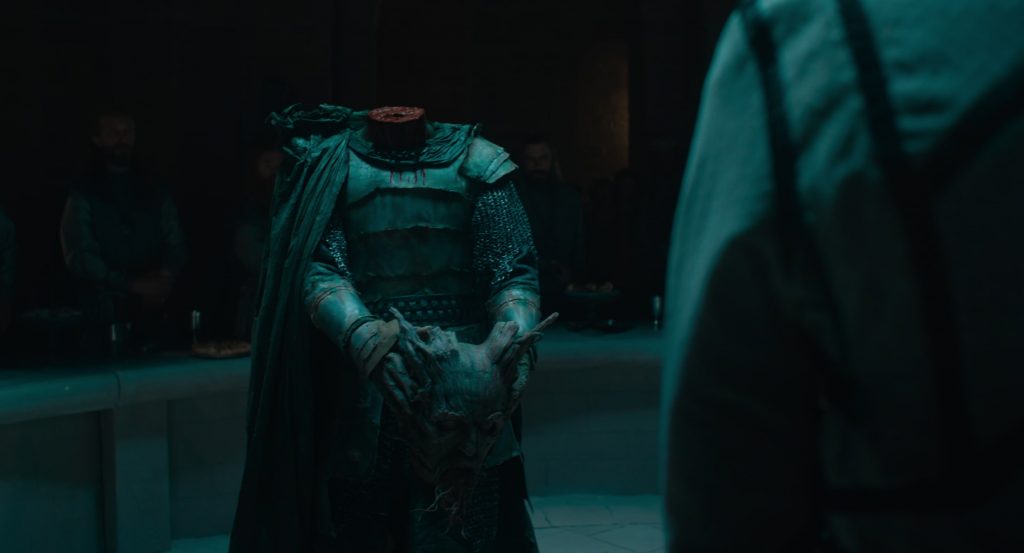
The Green Knight gives Gawain a year’s time to meet him at the Green Chapel, where and when he will return the blow received.
This time window reinforces the idea of the cycle of nature, and Lowery further highlights this by showing an actual wheel of the seasons.

Gawain must now depart on a journey to find the Green Chapel. The journey will consists of five quests, and at each one, a knightly virtue will be tested.
In medieval times, a knight was supposed to have five virtues in order to deserve the title. The five virtues are often represented by a pentacle, and Arthur and his knights are actually shown to wear that symbol.
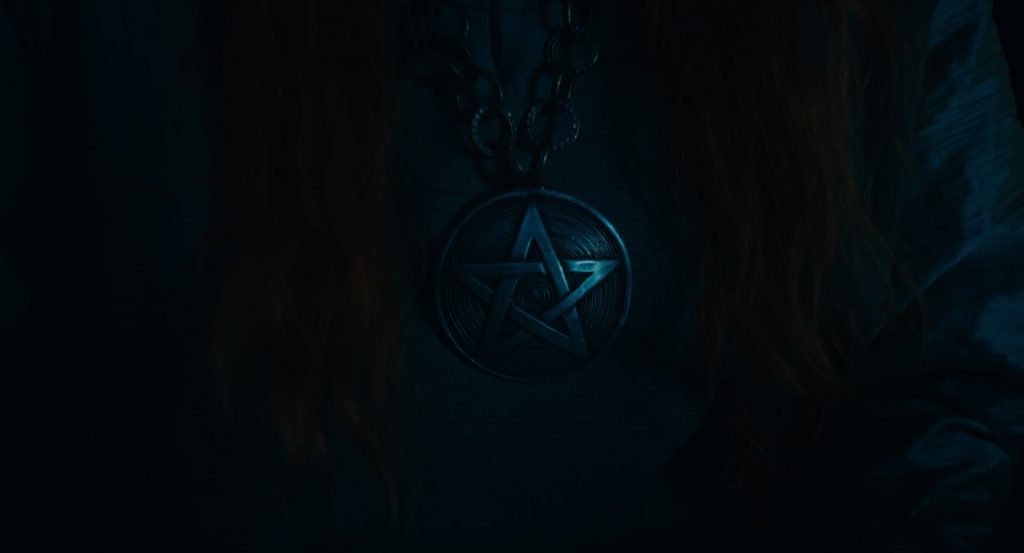
The pentacle also had other meanings, such as the five wounds of Christ and the five joys of Mary, reinforcing the prevalence of Christianity at the time the movie is supposed to be set.
Before Gawain leaves, Morgan gives him a green sash that will protect him. As long as he’s wearing the sash, nothing can happen to him.
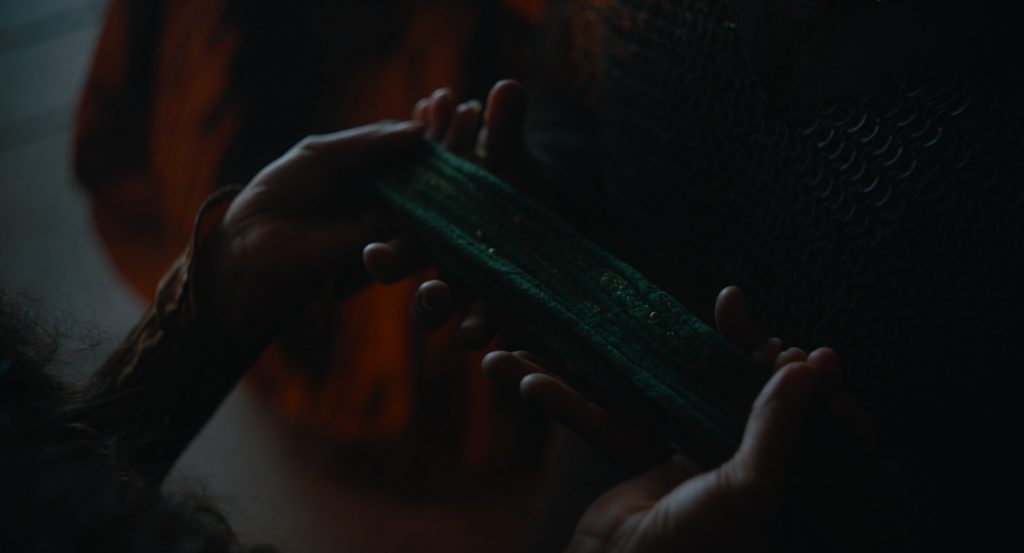
But back to the knightly virtues – what are we talking about here, really? The five virtues every knight must possess are:
- Generosity
- Courtesy
- Chastity
- Friendship
- Piety
Let’s delve into the quest that will test Gawain’s ability to be a knight.
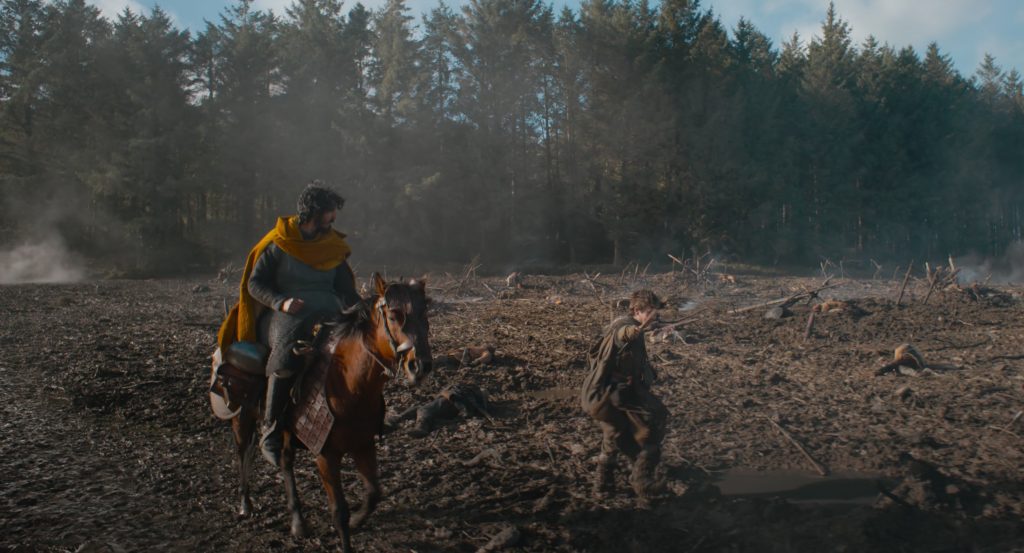
The first quest – Generosity
At the onset of his journey, Gawain asks a poor boy for directions. The boy helps him, but when he asks for retribution, Gawain dodges the question and tries to get away with giving the boy nothing.
The right thing to have done as a knight, of course, would have been to repay the boy’s kindness.
As a result of his actions, Gawain ends up being robbed and tied. There’s a 360-degree shot that goes from Gawain being tied on the ground to his would-be future skeleton.
The shot goes full cycle from winter to spring to winter again, and from life to death to life again.
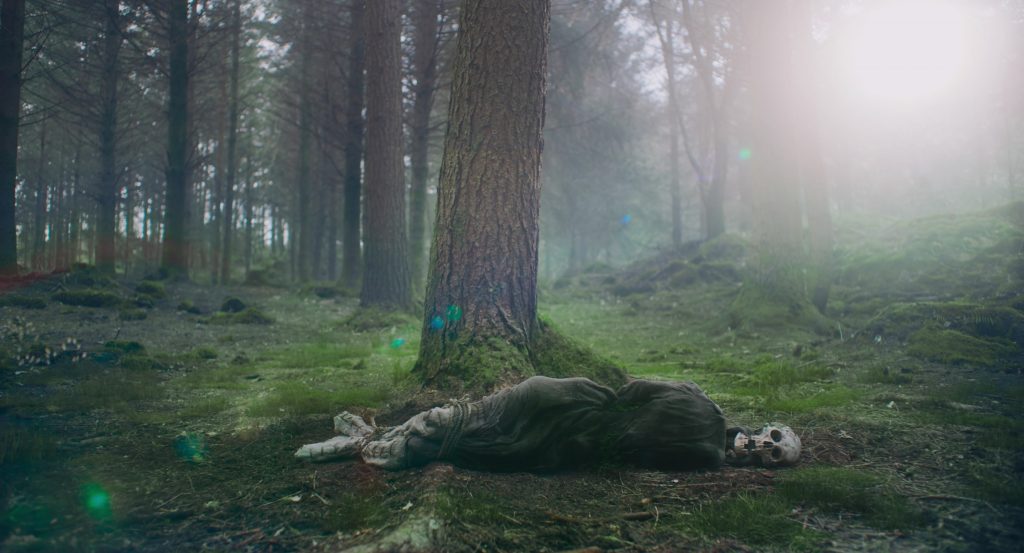
This would be Gawain’s greatest fear – to die a meaningless death, without proving himself worthy of knighthood. The shot is apparently reversed as if nothing had happened, but both Gawain and the viewer have had time to ponder on death.
As a quick note, besides robbing Gawain’s possessions, the thieves also shatter his shield, bearing the image of the Virgin Mary. This represents Gawain’s slowly entering a world where pagan forces are as prevalent as his Christian beliefs.
The second quest – Courtesy

On his second quest, Gawain comes across St. Winnifred. The story goes that, around the year 63o, she was decapitated by a suitor when she refused his advances, choosing to become a nun instead.
Winnifred asks Gawain to return her head from the lake, which he does – only to demand payment afterwards.
It is worth noting that Winnifred mentions to Gawain that the Green Knight is someone he knows. That is because, unbeknownst to him, his mother Morgan le Fay has been controlling the knight all along and is the one to set things in motion.
Also, as a reward for retrieving Winnifred’s head, Gawain is rewarded with the axe the thieves stole from him during the first quest.
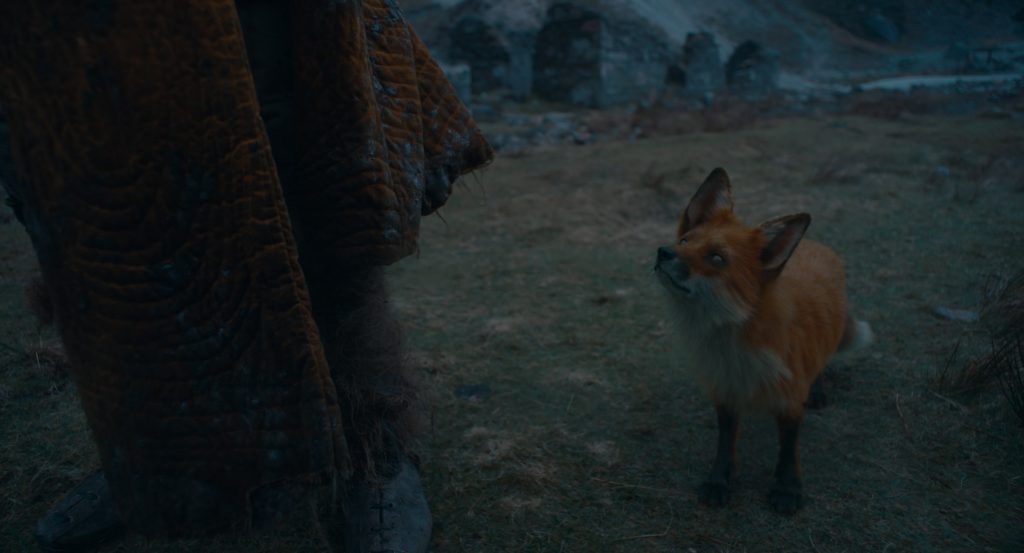
It is also around this time that a fox companion to Gawain first makes its appearance in the movie.
In the original poem, Gawain is given the fox by a Lord, and must give the green sash in return. He doesn’t, however, showing that he is cunning and deceitful.
Coincidentally, those were attributes associated with foxes in the Middle Ages, so that the fox can be seen as an extention of Gawain’s personality.

In the following scene, Gawain sees a group of giants and tries to hitch a ride with them. He flinches, though, as a giant accepts and tries to take him.
Giants were a symbol of nature in medieval times, so Gawain’s fear of them is indicative of his being unable to accept the cycle of life yet.
Third and fourth quest – Chastity and friendship
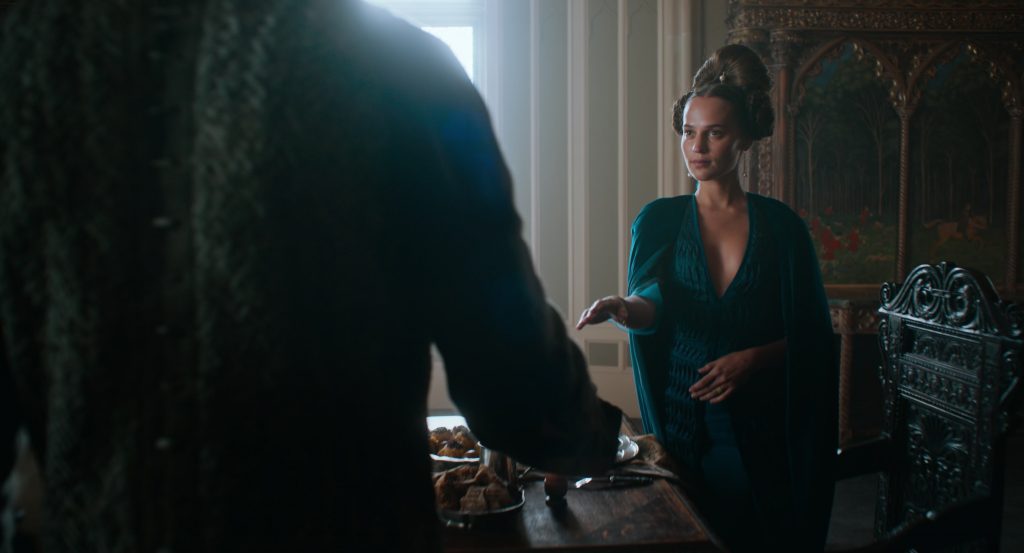
Gawain arrives at a castle where a Lord and a Lady live. They offer him their hospitality, but Gawain is unable to behave as it would be expected of him.
The Lady looks exactly like his lover, Essel, and it is not long before Gawain betrays his host’s kindness with his wife, thus failing both on the chastity as in the friendship fronts.

All this while, a mysterious older woman with a blindfold on can be seen sitting at the table.
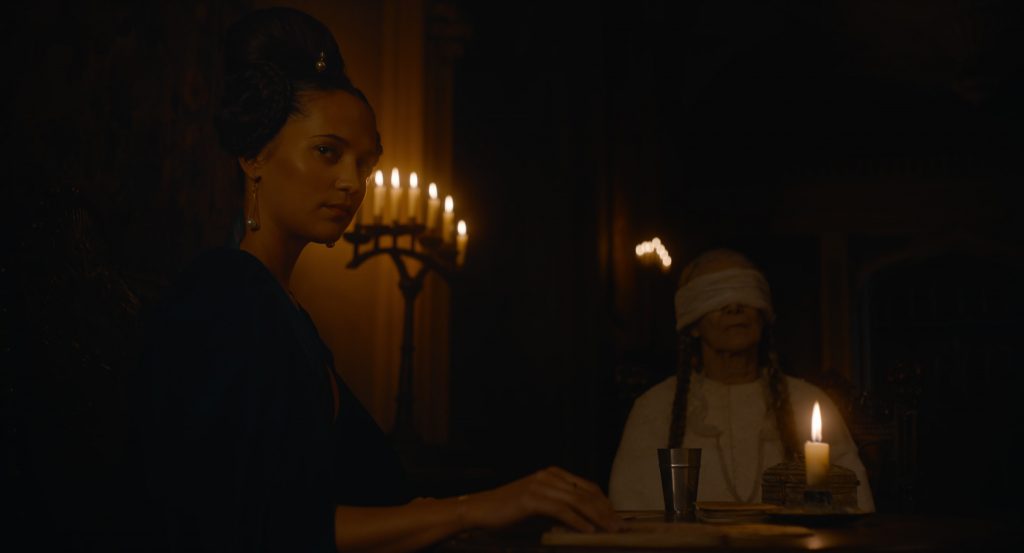
This woman is actually a stand-in for Morgan, who is still watching over her son. In fact, when Morgan conjured the Green Knight, she puts a blindfold on, meaning that she is able that way to see beyond her immediate surroundings.
The final quest – Piety
Having failed on every possible level as a knight, Gawain continues his way towards the Green Chapel.
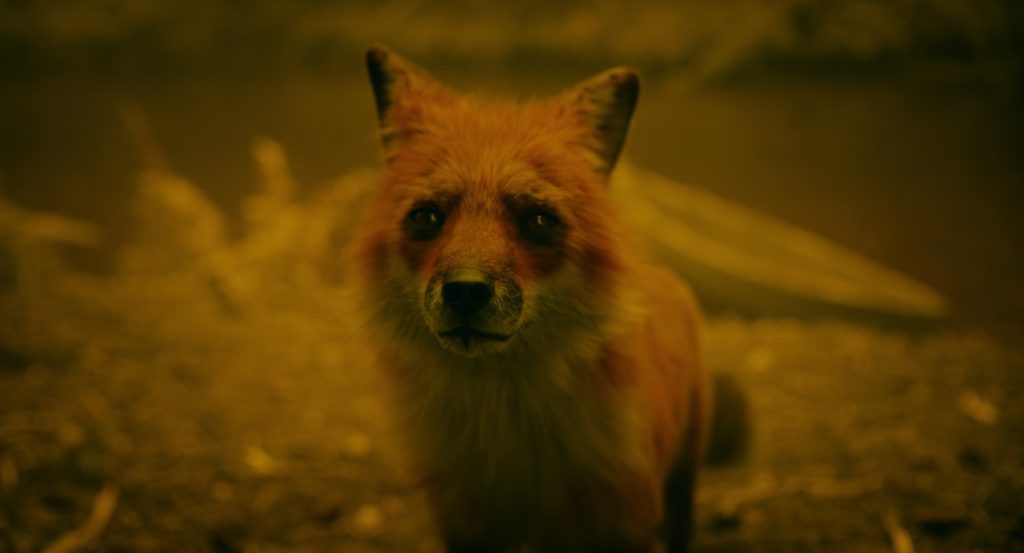
But the fox cautions him against actually facing the Green Knight – after all, he could just go back to Camelot and lie to everyone. Its voice merges with that of Morgan, meaning that the fox is not just a figment of Gawain’s character, but also another way for his mother to watch over him.
But it is here that Gawain apparently decides to finally own up to his duty, thus proving himself pious. He enters the Green Chapel, and just when he is about to get his head cut off – he seems to run away.
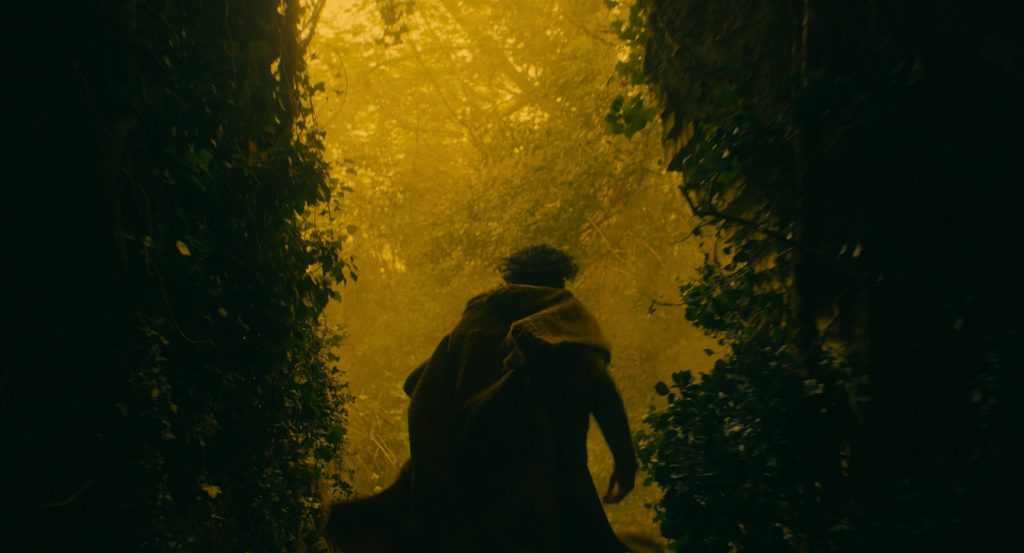
We are then treated to a glorious 15-minute scene during which we see Gawain’s life pan out as a honourless knight.
In this possible future, Gawain remains safe by never taking off the green sash. He becomes King, has a son by Essel whom he takes away from her, and marries a noblewoman.

However, his son dies in the battlefield and it is clear that the people hate him.
In the end, he decides that a life without honour is not worth living, takes off the sash, and is decapitated by the Green Knight.
Having seen the future that awaits him, Gawain decides to remain at the knight’s mercy and offers him his neck.
The movie seems to end with the knight saying the enigmatic words “Off with your head” – but was that what he actually said?

In a post-credits scene, we can see that Gawain has had a child, so that he must have survived the ordeal. It would have been a very harsh punishment from his mother indeed if he were to have died during his journey.
The Green Knight’s words can be then interpreted as “Off, with your head”, thus ending Gawain’s arc in a full cycle of redemption.
All images belong to their respective owners. Screencaps from fancaps.net

